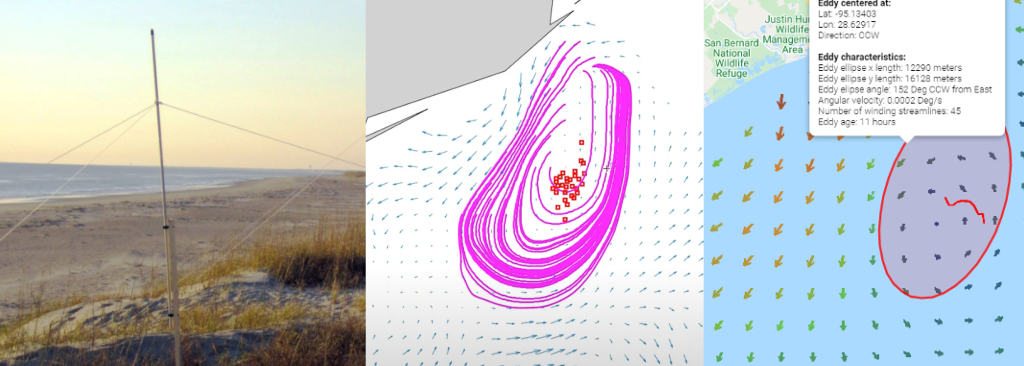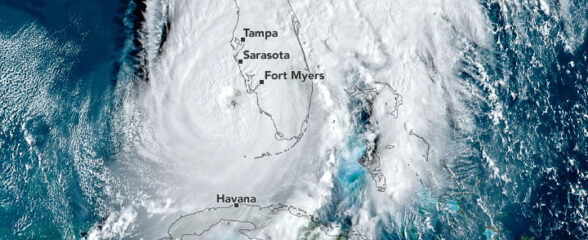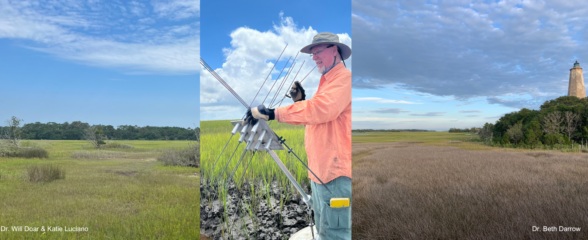
SECOORA’s 2020 Data Challenge Winner, Douglas Cahl from the University of South Carolina, has developed a new online tool that identifies eddies from 6km resolution High Frequency radar (HF radar) current data.
HF radars are land-based systems that measure the speed and direction of ocean surface currents in near real-time. Interesting features are often seen in the ocean’s surface currents, such as eddies.
Eddies are loops of swirling water. In the Southeast, small and large eddies often break off from the Gulf Stream. Eddies are important ocean features – affecting pollution and larvae transport, fishing, mixing in the ocean, primary production, and even can be a danger to oil rig operations.
This new tool leverages HF radar’s unique data set to identify where eddies are located. Whether looking for the best fishing spot or researching ocean currents, this tool makes it so you do not have to be an expert to locate eddies.
Due to the need for real time analysis, this software created by Cahl is currently being run hourly. Every hour, tidally removed 25 hour averaged HF radar surface currents are analyzed by the software to identify eddies.
They are displayed on this website and the red dots highlight the eddy feature (if you zoom in you will see it is an ellipse signifying the shape of the eddy). Clicking on them will tell more about eddy identification (see picture on right).
The video below details how eddies are spotted using HF radar data.
This open source software is available for download and modification (GNU license) for scientific purposes and is easy enough to manipulate for the average python user. A description of the data set is provided on the website. This data set includes detailed information on eddies identified in the HF radar data sets since Feb 28, 2021.
Real time data analysis is also provided in a downloadable ‘csv’ file for ease of use (you can open it in excel).The ‘csv’ file is targeted at science and nonscience users not comfortable with python data manipulation. The website tool can be used by anyone interested in these ocean features, and is a great way to explore the HF radar measurements.
More information and source code can be found below:
- Eddy analysis using 6km HF radar currents available as an interactive map with near real-time data
- Full eddy analysis files for download, data description available here
- Download latest data set (6km hf radar currents) here
- Check out the code code for usage and file creation details.
Contact communications@secooraorgpact.wpengine.com if you have any questions.
Related news

SECOORA Webinar on the Rapid Intensification of Hurricane Ian: Warm Subsurface Water on the Wide Continental Shelf
Join us Thursday, April 24th at 12 PM ET for the April installment of the SECOORA Coastal Observing in Your Community Webinar Series! This month, we will hear from Dr. Yonggang Liu from the University of South Florida. He will discuss his research on the rapid intensification of Hurricane Ian in relation to anomalously warm subsurface water on the wide...

Webinar: SECOORA Data Portal Demo
Join us on Thursday, February 20, 2025 at 1:00 PM ET to learn more about the SECOORA Data Portal and how to navigate it. Axiom Data Science will be providing an overview of the portal, including how to search the Catalog and make a custom data view.

Meet the Winners of the Surface Elevation Table (SET) Call for Proposals
SECOORA hosted a request for proposals for the installation of new Surface Elevation Table (SET) stations or the reactivation of historic SET stations within the Southeast region. This opportunity covers the cost of materials and supplies for the stations. Meet the winners here!
